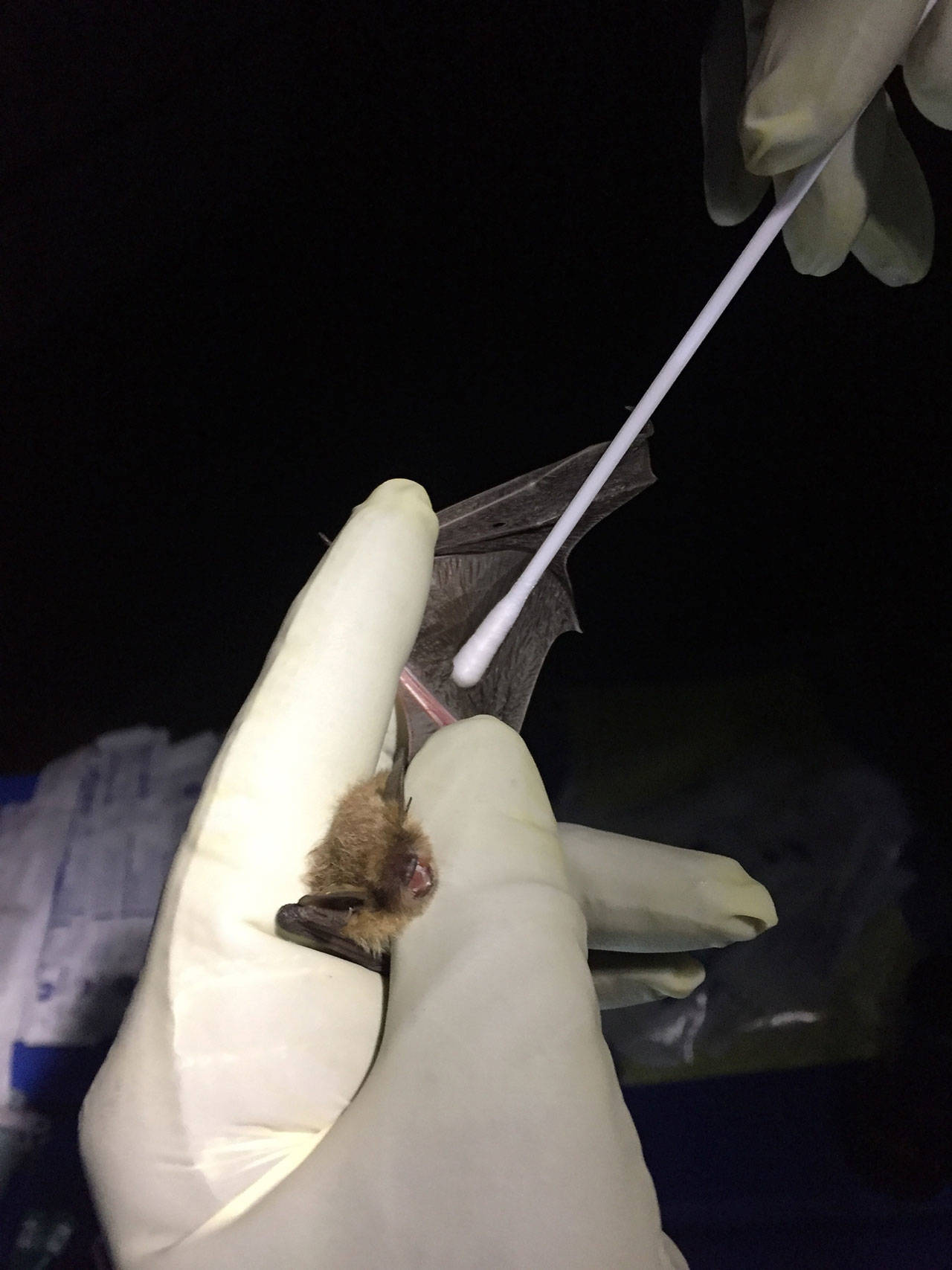A disease that has been devastating bat populations on the East Coast is spreading in the state after tests confirmed the presence of white-nose syndrome in southwest Washington.
Lab tests confirmed in February that bats in the Mt. Rainier National Park have been exposed to the fungus that causes white-nose syndrome. This discovery marks the spread of the disease, which had previously been found only in North Bend and Seattle on the West Coast.
White-nose syndrome is caused by a fungus that infects bats while they hibernate for the winter. It covers their nose, wings and ears with a white fuzz that disappears when the bats awaken from their slumber. But instead of going away, the fungus invades deep skin tissue and causes severe damage. It can additionally wake bats from their slumber, causing the animals to burn essential fat reserves and sometimes leads to starvation.
It was first detected in bat populations in Albany, New York in 2006 and has spread to 31 states and into Canada. A 2012 estimate from U.S. Fish and Wildlife pegged the number of bats killed at upwards of 5.5 million and it has continued to spread since, wiping out whole colonies of the winged creatures in the process.
White-nose disease hadn’t been documented further west than Texas until a little brown bat (yes, that’s their name) was found alive by a hiker in the Olallie State Park in North Bend in 2016. The bat was taken to a veterinarian but later died. It was confirmed to be a carrier of the disease and multiple instances of white-nose syndrome have been documented around North Bend and Seattle since then. The most recent documented case was a Yuma myotis bat found near North Bend this January.
The fungus thrives in cold and damp places such as the caves and mines more than half of the 45 species of U.S. bats call home while hibernating. A silver lining for West Coast bats is that they tend to hibernate in smaller colonies than their East Coast cousins, limiting the spread of the disease. Humans were likely the reason U.S. bats fell ill since the disease hadn’t been documented in North America before 2006.
It’s difficult to know the extent to which the fungus has spread in the Washington, said Abby Tobin, who manages the state’s Department of Fish and Wildlife response to white-nose syndrome. There’s a lot of unknown surrounding bats habitat and behavior.
“Unfortunately we just don’t have a good way to look at it from this point,” she said.
While bats on the East Coast hibernate in caves and mines, habitats for West Coast bats are harder to find but the state is using technology that can pick up bat’s echolocation calls to try and track them. Once they find colonies, they can begin testing for the presence of white-nose syndrome.
The white-nose syndrome fungus is not dangerous to humans, livestock or pets but it can hitch a ride on the clothes of hikers exposed to it and spread to uninfected bat environments. The Department of Fish and Wildlife recommends decontaminating gear after hikers enter areas where bats are present and to report sick or dead bats.
Bats can get a bit of a bad rap in popular culture but the furry, flying mammals can eat up to 1,000 mosquitoes in one hour and the creatures munch on tons of insects that would otherwise devour crops, nibble on humans and harm forests. It is estimated they save U.S. farmers more than $3 billion annually in pest control services.
Tobin didn’t know how widespread the disease was on the West Coast or how bat populations would be impacted in the long run. Some colonies on the East Coast have begun to rebound, potentially from an immunity to the fungus. While she hopes mortality rates won’t be as high in Washington state, the future of bat colonies in the state is uncertain.
“It’s hard to know,” Tobin said.
Bat colonies as well as sick or dead bats can be reported to the Department of Fish and Wildlife at wdfw.wa.gov/conservation/health/wns.



